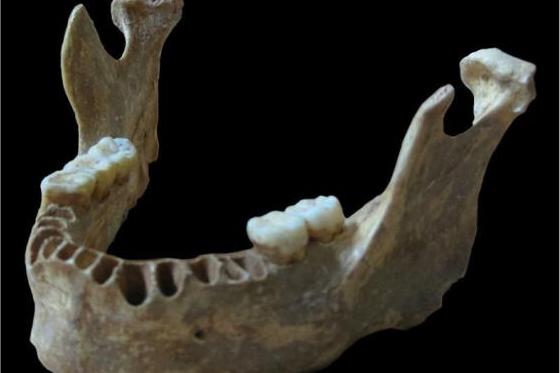Early Romanian Man was Closely Related to Neanderthals

MUNICH, Germany, June 22 (UPI) — It’s now an accepted fact that early humans interbred with Neanderthals. Modern humans in Eurasia received one to three percent of their DNA from the extinct hominids.
But as new research reveals, early Europeans enjoyed a greater proportion of Neandertal DNA. The jawbone of a ancient Romanian man was recently found to possess as much as six to nine percent Neanderthal DNA.
Genetic analysis showed that the man and his jawbone were just four to six generations removed from a Neanderthal relative. The findings suggest the first humans to migrate into Europe quickly interbred with local Neanderhtal populations.
The jawbone, first located in 2002, was found in Oase Cave in south-western Romania. It’s one of the earliest European remains of modern man. As recent DNA analysis revealed, the fossil features unusually long and intact segments of Neanderhtal chromosomes.
“The data from the jawbone imply that humans mixed with Neandertals not just in the Middle East but in Europe as well,” Qiaomei Fu, a geneticist at Harvard and one of the lead researchers in the study, said in a press release.
“We hope that DNA from other human fossils that predate the extinction of Neandertals will help reconstruct the interactions between Neandertals and modern humans in even more detail,” said Mateja Hajdinjak, a geneticist at the Max Planck Society.
The new research was published this week in the journal Nature.






